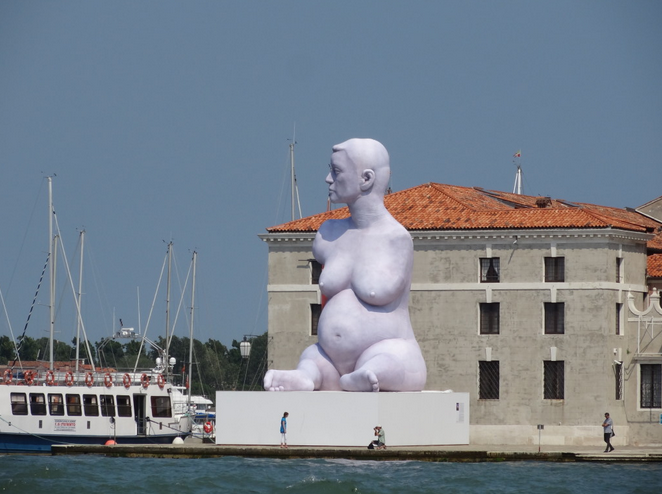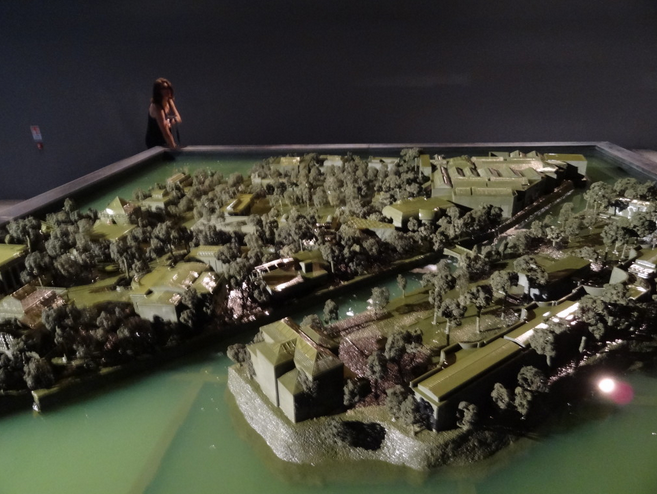55th Venice Biennale, Venice Residency 2013
October 31, 2014
By Deborah Bouchette
Everyone seems to speak of the “Venice Biennale” as if it were located in one space. I was surprised to find out that in addition to the original site, a second official site is located in the old arsenal complex, and then “collateral” events are staged in all sorts of spaces, even private homes and palaces (or palazzi), all over town.

At the Biennale, art seems to have descended from outer space and the restless sojourners have settled temporarily in every nook and cranny—even on ships parked in the canals. The first in-your-face piece we all saw was when we were on the vaporetto traveling to our hotel. Marc Quinn’s enlarged and inflatable version of his sculpture “Alison Laper, Pregnant” was certainly an eye-opener, situated as she was in front of the San Giorgio Maggiore church. Wow. Welcome to Venice.
Venice is where, in June, first- and second-year students got to meet for the first time. It was a full house at our Hotel Helvetia in the Lido section of town, probably the best possible location to suffer through the intense heat. Some people took advantage of the nearby beach to cool off in the long, lazy, sunlit hours of high-summer Venice evenings. But our days were packed with looking at, listening to, thinking about, talking about, and practically eating Art. It was like a full-course banquet, day after day.

Of course, we all spent an entire day or more at the main site of the Biennale, the Giardini, a beautifully treed park where the 30 permanent national pavilions and the very large central pavilion are located, the latter of which housed an exhibition entitled “Il Palazzo Enciclopedico,” and true to its name, it contained a bit of everything. At the end of one walkway was the rare, blue version of Charles Ray’s series of eight-foot-tall, early-1990’s mannequins, but, alas, no pictures were allowed. Elsewhere in the pavilion, I was astounded and enthralled to find so many pieces by Hilma af Klint (Swedish, 1862-1944), who developed abstract art long before Wassily Kandinsky.

The Arsenale (once considered a fringe event) was another long day’s hike, temporary home to exhibits from many countries without their own pavilion. My favorite was Alfredo Jaar representing Chile—I had heard him speak in Portland, Oregon, and was so impressed at his convictions to make his art make some difference to better the world. He created a monochromatic 1/60th-scale model of the Giardini and all its pavilions, and had it slowly rise and sink in a huge pool of water the color of some of Venice’s lagoons. People sometimes came into the viewing area and only saw the water and left. What a shame they didn’t take the time to really look at the art.

We also had the opportunity to visit the Peggy Guggenheim Collection, a permanent modern art museum located in the Guggenheim’s private residence. And, as a group, we went to a collateral exhibition entitled “Prima Materia” in the Punta della Dogana, located in what was once the very large customs house of Venice. This gorgeous, multi-storied, well-lit space was filled to the brim with works of the last few decades from world-class artists. Then there was the “Return to Venice” exhibit of hundreds of Manet paintings at the Doge’s Palace next to St. Mark’s Basilica. Art was everywhere; dreams of art came easily after the long days.

Venice
